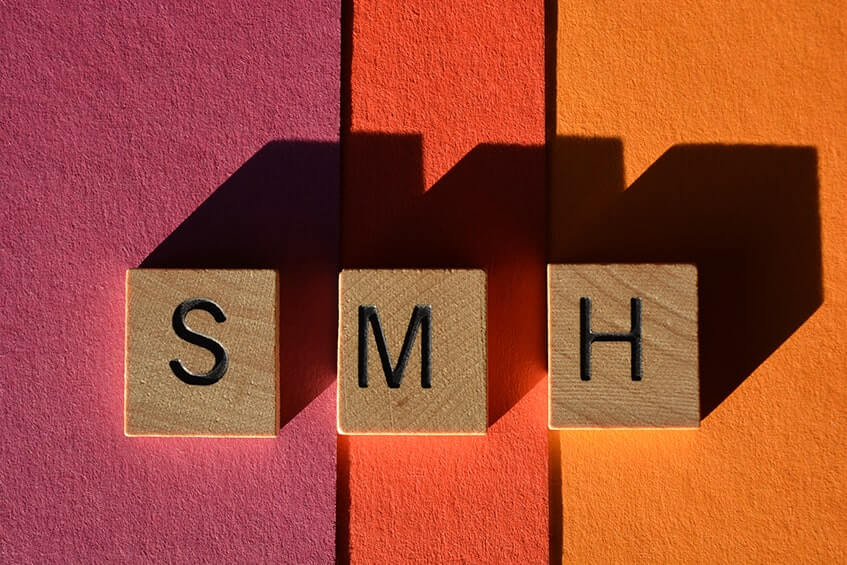What Does Smh Mean?: With the internet being around for several decades, communication has evolved and continues to do so. Nowadays, there are various ways to connect with people online, such as AOL Instant Messenger and Instagram Notes. However, when communicating with someone, they may use acronyms that you are not familiar with, which can cause confusion.
RELATED: What Does Pushing P Means? – Gunna explains
To help you navigate this digital language, we have compiled a list of common texting acronyms, including “smh.” These acronyms have emerged as a shorthand for expressing different emotions and ideas in digital communication, allowing people to communicate more quickly and efficiently.
Table of Contents
What Does Smh Mean?
According to Merriam-Webster, “Smh” is an abbreviation for “shaking my head”. It is one of several acronyms commonly used in texting, social media, and other digital communication. This abbreviation, often spelled out in lowercase, is frequently used on online messaging and social media platforms to convey disappointment, frustration, or disbelief in response to something said or done by someone else.
How to use ‘Smh’
You can use “smh” in a variety of ways in online messaging and social media platforms. Here are some examples:
- Disapproval: If you disagree with something someone said or did, you could respond with “smh” to express your disapproval.
Example: “I can’t believe he said that. Smh.”
- Frustration: If something is bothering you or causing you to feel frustrated, you could use “smh” to convey your feelings.
Example: “I’ve been waiting for this package for weeks, and now they say it’s delayed again. Smh.”
- Disbelief: If you find something hard to believe, you could use “smh” to express your disbelief.
Example: “He really thinks he can pass the test without studying. Smh, good luck with that.”
Remember that “smh” is a casual and informal abbreviation, and may not be appropriate for all situations. Use it wisely and considerately.

The origins and history of “Smh”
The origins of “smh” are unclear, but it is believed to have emerged in the early days of text messaging and online chat. It is thought to have originated as a way to express non-verbal communication in a digital space, as people were not able to physically shake their heads to convey disapproval, frustration, or disbelief.
The acronym gained widespread use on social media platforms such as Twitter, Facebook, and Instagram, where users could quickly and easily express their thoughts and emotions with a few keystrokes. The term has also been included in online dictionaries such as Merriam-Webster, indicating its cultural significance and acceptance in modern communication.
Over time, “smh” has evolved to include variations such as “smdh” (shaking my damn head) and “smfh” (shaking my freaking head), which convey stronger emotions of disbelief or disapproval.
Today, “smh” is a common and widely recognized acronym used in online communication, and its continued use is a testament to the ever-evolving nature of language in the digital age.
Conclusion
In conclusion, with digital communication constantly evolving, it is important to stay up to date with common acronyms and other forms of shorthand to effectively communicate online. Understanding these digital communication tools can help you avoid misunderstandings and improve your online communication skills.




